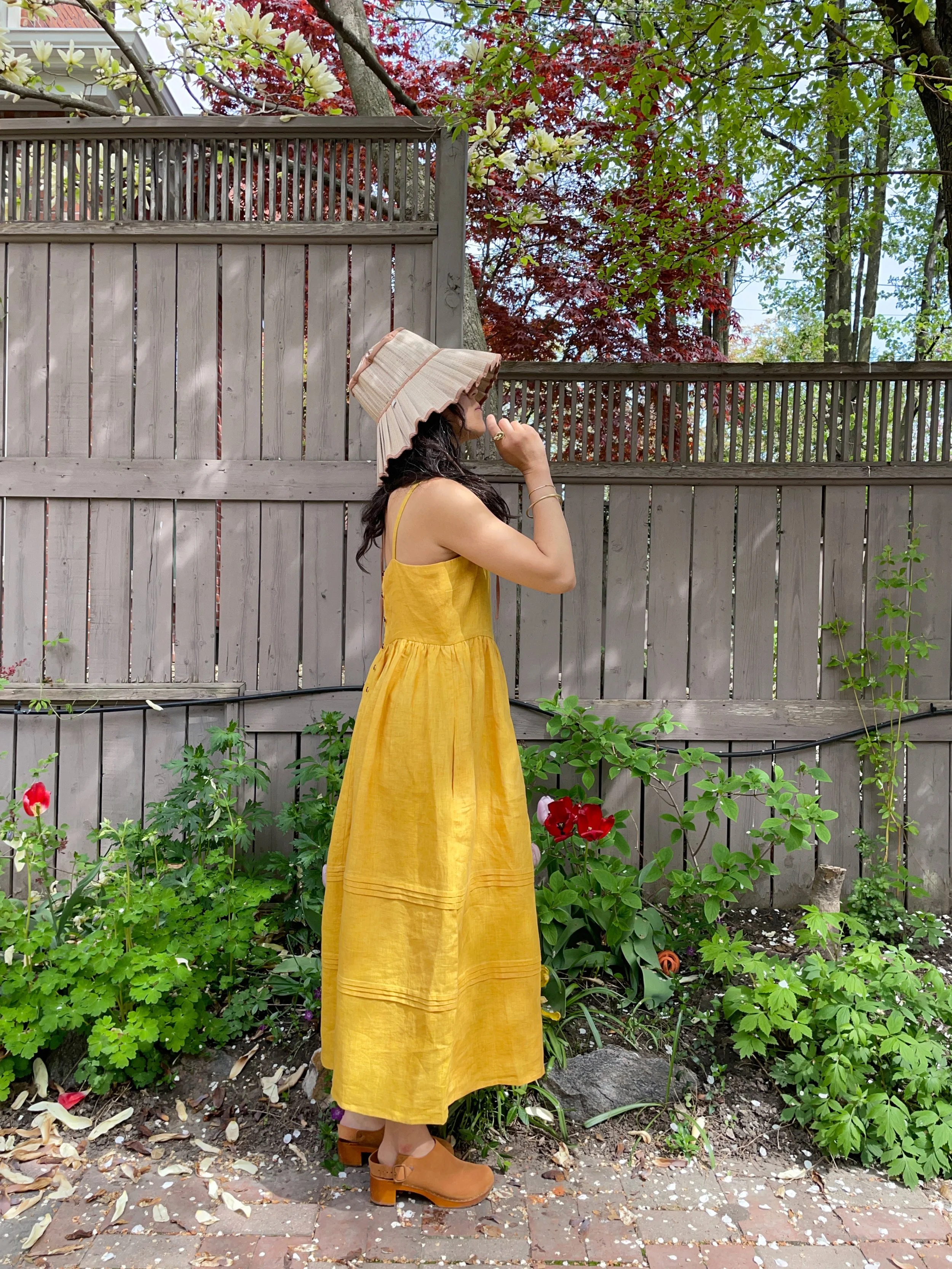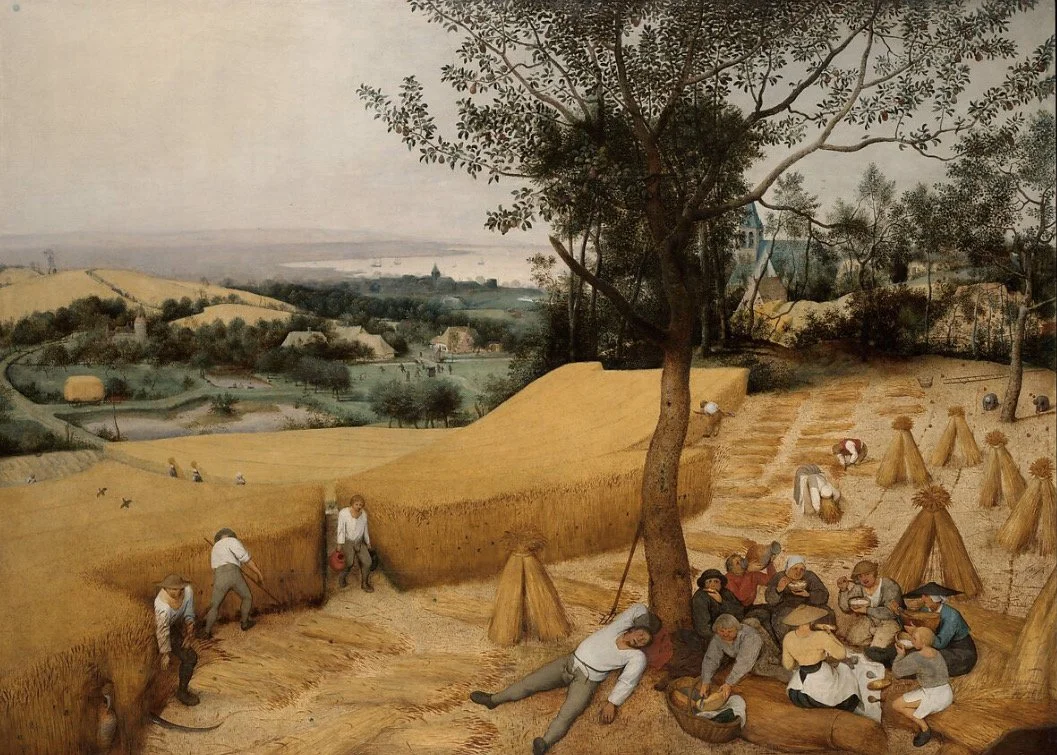Erica Kim
Thank you so much for collaborating with us Erica, this is the first time I have done this and it has been so much fun working with you. I have loved taking inspiration from your references to create new colours and silhouettes.
When you shared your inspiration, I loved that you referenced paintings, art is always such an inspiration for me when i’m developing new colours. You are a trained art historian so I’m guessing art is a big influence in your life?
Erica: I wasn’t that interested in art until high school when I took a course in art history. Mostly we memorised movements and significant works. But I remember being drawn to colour, especially stained glass in gothic cathedrals. I’m a social art historian, but my true love is colour and how it expresses different feelings.
Could you talk a little bit about the artists and paintings you chose and what they mean to you?
Erica: The Flemish Renaissance painter Pieter Bruegel the Elder’s landscapes show us everyday life in the countryside. The warm colours and composition engages the eye, leading us from the foreground where people are resting, to the widening circles of a modernising world connecting golden wheat fields, farms, village harbour and beyond. I especially love how Bruegel depicts wheat as a landscape, building material, and seating for a late-afternoon break. Even the upright bundled wheat appears like a human form. In this painting from the 16th century, the natural world is a source of sustenance and inspiration.
Pieter Bruegel the Elder, 1565
Erica: Arnold Böcklin’s “St Anthony Preaching to the Fish” was painted 300 years later yet evokes the Renaissance. This painting is so charming with the shark raising its eyes in a comically attentive manner. In his depiction of the rocks, the craggy surfaces are carefully rendered, but if you look at the shadows, the rocks appear supernatural as if defying gravity. The combination of anthropomorphised sea creatures (check out the grumpy face on the fish peeking from between the rocks) and realistic depiction of the natural world makes this an especially delightful work.
Arnold Böcklin, 1892
You love dressing up and it’s so nice to watch you having fun with your wardrobe. I love the way you layer things and your playfulness with colour. Do you have a palette you try to stick to? Favourite colours?
Erica: Except for black, which I have never been drawn to, I don’t really have any particular palette. I find it’s when I layer that colours speak to each other in interesting ways. The fabric and texture also affects how a colour appears, reflecting the light and casting a shadow. One colour I thought I could never wear, yellow, has become one of my favourites.
You blend your wardrobe effortlessly from day to night, work to weekend. What are your tips?
Erica: Comfort and weather are always at the top of my mind. I think about layers and how an outfit will look in motion. I’m always planning ahead, will it be annoying if I carry my coat, should I wear a vest and sweater so I can put one of them in my tote bag? Shoes are the hardest part of my wardrobe planning. I rarely wear heels or delicate shoes because I walk and bike everywhere. Luckily I’ve convinced myself that Blundstones look great with everything!
Have you always loved clothes and dressing up?
Erica: One of my earliest memories is staging a fashion show for my stuffed animals. I can still picture my favourite dress, a tiered pastel dress with lace trim. My mom often made my clothes, and we would go to the fabric store to choose the pattern and trim. I was always fascinated by the transformation from abstract pattern shapes to clothing.
How does someone who loves clothes so much shop responsibly?
Erica: I really love how you’ve phrased this question because I am not a minimalist! I try very hard to buy from small brands and shops where people care about everyone involved in the process. How it’s made is so important, but it’s also worth asking why I want to add something to my closet. Sometimes I buy things that seem frivolous yet express a part of me that is often invisible. I have a Marni coat with a beautiful hummingbird print that I only wear once a year on the day when Spring has finally arrived. Being responsible also means thinking about the entire lifespan of a garment. I often mend my clothes or pass then onto friends.
Final question! Favourite place to be, real or imaged?
Erica: There’s nowhere I’d rather be than sitting on a warm rock by a waterfall or tide pool after a long gruelling hike. Last summer I was in Vernon, France, where there are so many swimming holes filled with the most beautiful blue green water.





